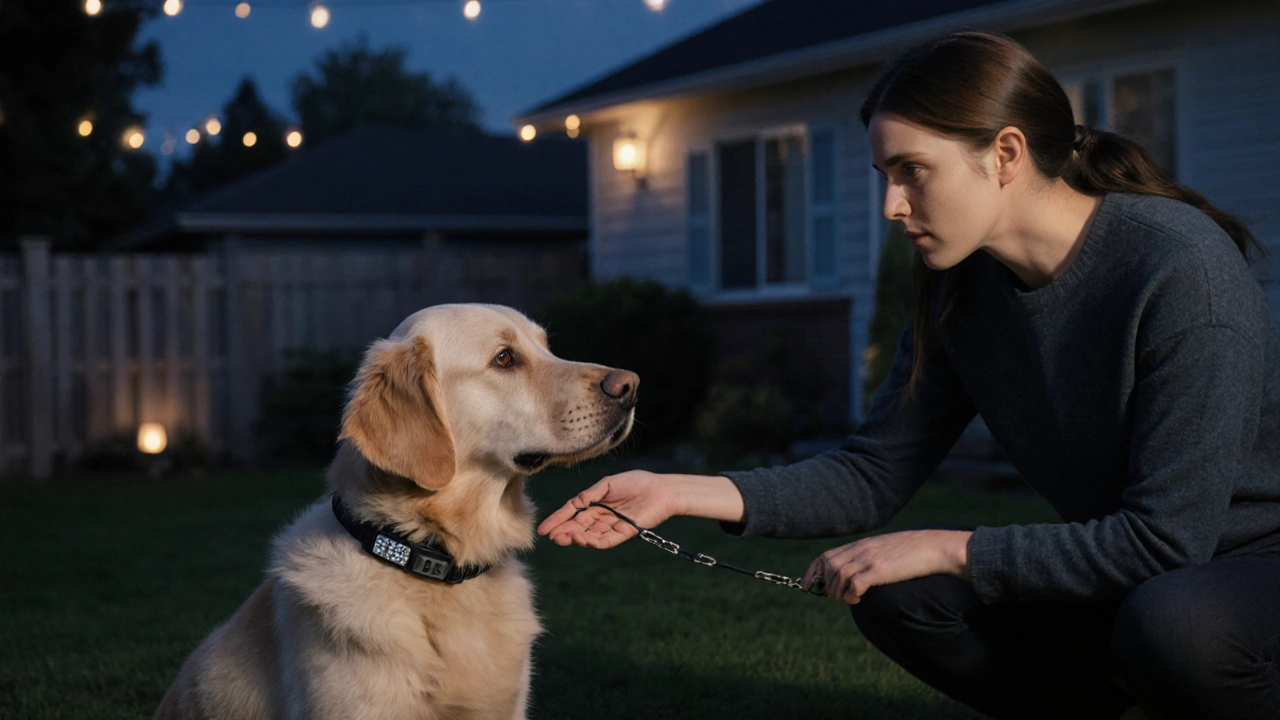Humane Dog Training: Kind Methods for Happy Pets
When working with humane dog training, a approach that teaches reliable cues while protecting the dog's emotional wellbeing. Also known as positive‑reinforcement training, it relies on rewards, consistency and trust instead of pain or fear. Related tools include bark‑collar alternatives, devices that calm vocalising without shock and training collars, gentle cues that guide behavior without punishment. Another key piece is training sessions, short, focused practice periods that keep learning enjoyable.
Why kindness works better than force
Because humane dog training respects a dog’s natural instincts, it reduces stress and speeds up learning. When a pup associates a cue with a tasty treat, the brain lights up with dopamine, reinforcing the behavior. In contrast, choke or shock devices trigger anxiety, which can cause aggression or avoidance. Studies from UK shelters show that dogs taught with reward‑based methods display 30% fewer fear‑related behaviors during vet visits. That’s why owners who switch to kind methods often see calmer walks, quieter homes, and a stronger bond.
Positive reinforcement isn’t just “give treats all day.” It’s about timing, consistency, and mixing in play, praise and occasional life‑rewards like a walk. The key is to keep the ask low‑key early on – a sit for a second, a pause for a short duration – then gradually raise the difficulty. This mirrors the learning curve described in the post about session length, where five‑minute blocks for puppies grow to fifteen minutes for adult dogs. Short bursts keep attention high and prevent burnout for both dog and owner.
Bark‑collar alternatives such as vibration devices, scent‑based diffusers, or simply teaching a “quiet” cue fit neatly into a humane framework. They work because they address the root cause – excitement, boredom or anxiety – rather than just muffling the sound. The “Gentle Alternatives to Bark Collars” article shows that a calm cue paired with a calming chew can lower bark frequency by up to 60% within a week. When you combine that with a consistent “quiet” command, the dog learns not to bark out of habit.
Training collars, when chosen wisely, act only as reminders, not punishers. A lightweight no‑pull harness or a front‑clip leash gives gentle feedback that the dog can understand without pain. The “Best Dog Training Collars” guide highlights collars that use subtle pressure or sound cues, and it warns against shock‑based models that break the humane promise. By keeping the cue simple – a light tug or a soft beep – the dog learns the desired behavior while staying comfortable.
Session planning ties everything together. The “How Long Should Dog Training Sessions Last?” piece recommends three rules: keep it under ten minutes for puppies, end on a success, and vary the activities. Adding a short play break between repeats keeps dopamine flowing and prevents frustration. Pairing each session with a small treat or a quick game of fetch reinforces the positive vibe and makes the next practice feel like a reward, not a chore.
One common question is whether “teaching a puppy ‘no’” can stay humane. The answer is yes – you replace a harsh “no” with a redirection and a marker word like “oops.” The puppy learns what *doesn’t* work by being offered an alternative, such as a chew toy. This method appears in the “Effective Ways to Teach Your Puppy ‘No’” article and aligns perfectly with our kind‑first philosophy.
Putting these pieces together creates a tidy ecosystem: humane dog training builds trust; positive reinforcement fuels motivation; bark‑collar alternatives and gentle training collars provide low‑stress cues; and well‑structured sessions keep learning bite‑sized. Each component influences the others – for example, a calm cue from a bark‑collar alternative makes the dog more receptive during a short session, which in turn strengthens the reward association.
As you explore the articles below, you’ll see real‑world examples of each concept. From choosing the right bed shape for comfort to understanding omega‑3 supplements, every post ties back to keeping your dog healthy, happy and well‑behaved without harsh tactics. Dive in to find actionable tips, product recommendations and science‑backed advice that’ll help you practice truly humane dog training every day.

Humane Alternatives to Shock Collars: Safe Training Tools for Dogs
Discover pain‑free training tools like vibration, citronella and clicker systems as humane alternatives to shock collars, with pros, cons, a comparison table, and step‑by‑step transition tips.
View more